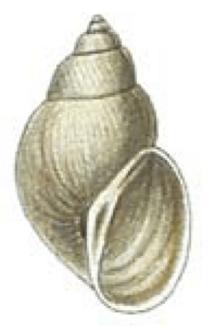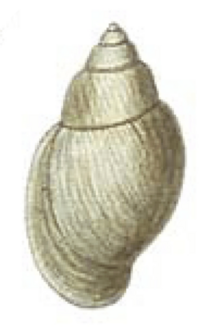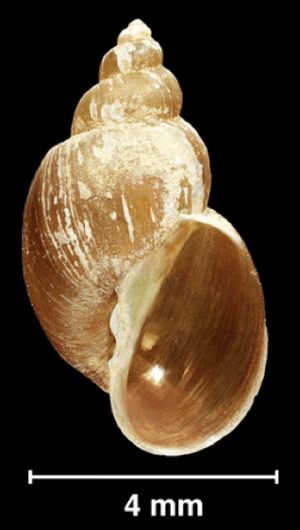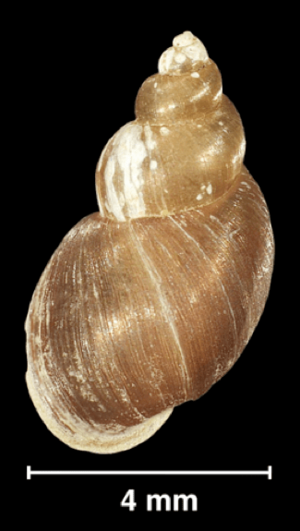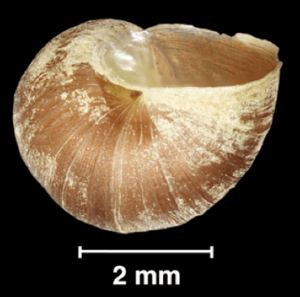Galba schirazensis facts for kids
Quick facts for kids Galba schirazensis |
|
|---|---|
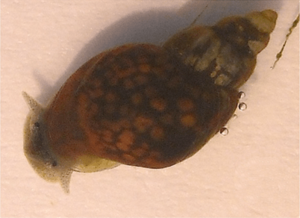 |
|
| a live Galba schirazensis | |
| Conservation status | |
| Scientific classification | |
| Genus: |
Galba (gastropod)
|
| Species: |
schirazensis
|
| Synonyms | |
|
Limnaeus Schirazensis Küster, 1862 |
|
Galba schirazensis is a type of air-breathing freshwater snail. It is an aquatic mollusk that belongs to the pond snail family, Lymnaeidae. These snails are known for living in ponds and other freshwater habitats.
Contents
Discovering Galba schirazensis
This snail species was first described by a German scientist named Heinrich Carl Küster in 1862. He named it schirazensis after the city of Shiraz in Iran. This is because Shiraz is where the first snail of this type was found.
For a long time, Galba schirazensis was often mistaken for a very similar snail called Galba truncatula. Scientists later used special tests, like looking at their DNA, to confirm that Galba schirazensis is actually its own unique species.
Where Galba schirazensis Lives
Galba schirazensis is found in many parts of the world. Its natural home includes countries in Asia, such as:
- Afghanistan
- Armenia
- Azerbaijan
- Georgia
- Iran (especially Fars and Gilan Provinces)
- Russian Federation
This snail has also been found in other places, like:
- Spain
- Egypt
- Portugal
Over time, Galba schirazensis was also brought to Central and South America. You can now find it in:
- Mexico
- The Dominican Republic
- Venezuela
- Ecuador
- Peru (in areas like Cajamarca and Lima)
What Galba schirazensis Looks Like
The shell of Galba schirazensis is usually brownish to reddish light brown. It is thin and shaped like a cone.
The shell has about four to five and a half rounded swirls, called whorls. The surface of the shell feels silky and has thin lines. The opening of the shell, called the aperture, is oval-shaped.
The shell can be between 2.41 and 8.06 millimeters tall. Its width ranges from 1.39 to 4.31 millimeters.
Here are some key features that help identify this snail:
- The shell's maximum height is about 8.06 mm.
- Its whorls are evenly rounded.
- The central pillar inside the shell, called the columella, is straight.
The snail's body is pale grey. It has large, black eyes and long, slender Tentacles. The top part of its body, under the shell, is dark brown to black. This dark color makes the shell look dark when the snail is alive.
Ecology and Life Cycle
Galba schirazensis often lives both in water and on land, showing a tendency to be terrestrial. They can sometimes be found near humans. It's common to find them living alongside Galba truncatula in the wild.
These snails usually reproduce by self-fertilization. This means one snail can lay eggs without needing another snail. They hatch from eggs that are laid in kidney- or banana-shaped clusters. Each cluster usually contains about 6 to 14 eggs.
Galba schirazensis and Diseases
For a while, scientists thought that Galba schirazensis did not carry the parasite Fasciola hepatica. This parasite causes a disease called fascioliasis in animals and sometimes humans. However, in 2017, research in Ecuador showed that Galba schirazensis can indeed carry this parasite. This means it can act as an intermediate host, helping the parasite spread.
Importance to Humans
Because Galba schirazensis looks so much like Galba truncatula, it has sometimes made it harder for scientists to study how Fasciola hepatica spreads.
However, this snail can also be very useful. It can act as a biomarker, which means its presence can show if new livestock have been brought into an area. Scientists also use Galba schirazensis as a model organism in laboratories. This helps them study how snails and parasites interact, which can lead to better ways to control diseases.



